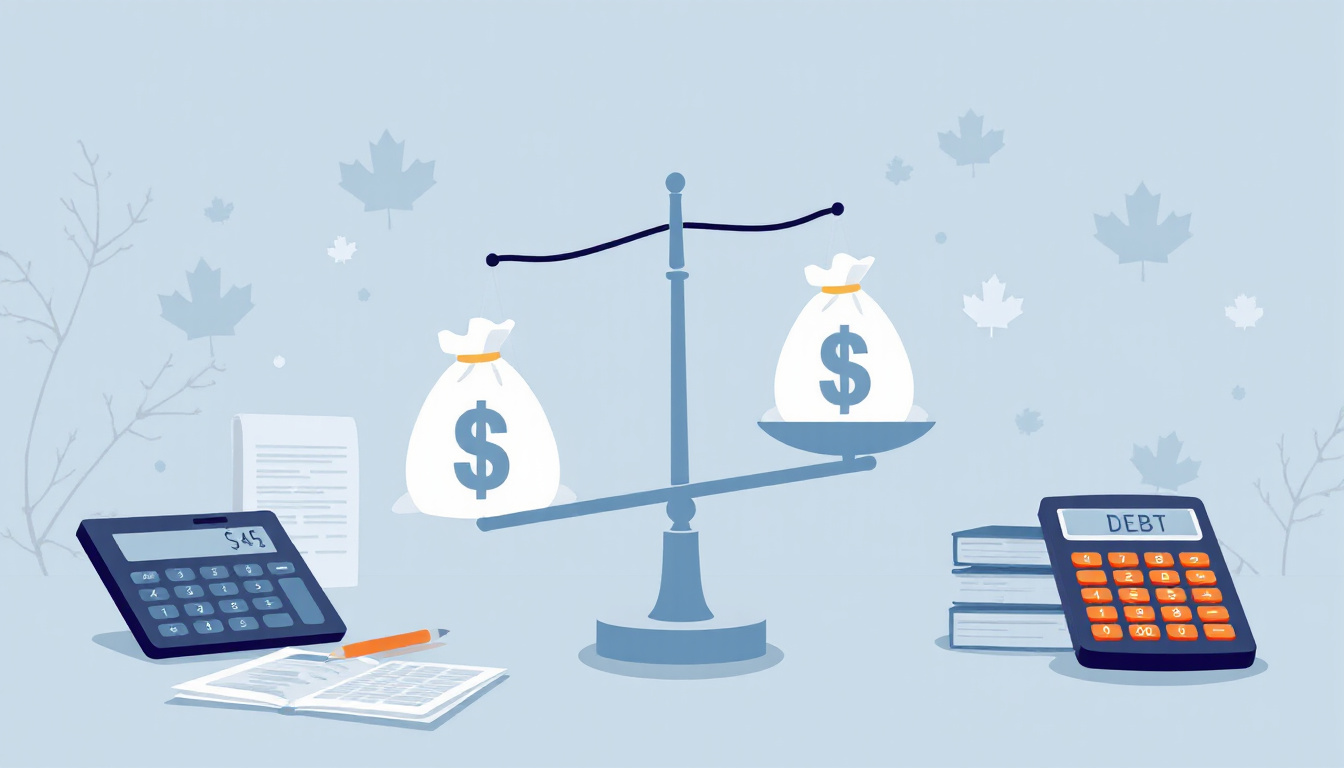In Ontario, the debt-to-income ratio stands at approximately 177% for households as of 2023, reflecting that the average household owes $
1.77 for every dollar earned. This significant statistic underscores the importance of measuring financial health and guides individuals in managing their debt levels effectively. The debt-to-income ratio (DTI) is a critical metric for both lenders and consumers, as it indicates the proportion of a household’s income that is used to service debt. Understanding how this ratio affects financial decisions can empower Ontarians to achieve better money management and enhance their overall financial well-being.

Key Takeaways
- The debt-to-income ratio is a crucial metric for assessing financial health in Ontario.
- Understanding your debt-to-income ratio can help in making informed borrowing decisions.
- Calculating your debt-to-income ratio involves dividing total monthly debt payments by gross monthly income.
- Maintaining a low debt-to-income ratio is essential for qualifying for favorable loans and credit options in Ontario.
- Improving your debt-to-income ratio can be achieved through strategies like reducing debt and increasing income.
What is the Debt-to-Income Ratio?
The debt-to-income ratio in Ontario is a key financial metric that represents the percentage of a household’s gross income that goes toward servicing debt. As of 2023, the average debt-to-income ratio in Ontario is approximately 170%, meaning that for every dollar earned, Ontarians owe about $1.70 in debt. This statistic underscores the growing financial pressures on residents, driven primarily by high housing costs and consumer debt. According to a report from the Canadian Bankers Association, over 50% of Ontarians are concerned about their debt levels, making this ratio a critical indicator of financial health in the province.
The Importance of the Debt-to-Income Ratio in Ontario
The debt-to-income ratio in Ontario is a critical financial metric that reflects the proportion of a household’s debt to its income, and as of 2023, the average debt-to-income ratio in Ontario stands at approximately 171%. This means that, on average, residents of Ontario owe $1.71 for every dollar they earn. This figure highlights the increasing financial strain on households in the province and is pivotal for understanding consumer behavior and economic stability. According to Statistics Canada, high debt-to-income ratios can lead to increased financial vulnerability, particularly in the face of rising interest rates and inflation. With many families already stretched financially, keeping an eye on this ratio is essential for both individuals and policymakers looking to address debt issues in Ontario.
‘It’s not how much money you make, but how much money you keep that matters.’ – Robert Kiyosaki

How to Calculate Your Debt-to-Income Ratio
To understand your financial health, it’s crucial to calculate your debt-to-income ratio (DTI) in Ontario. This vital statistic measures the percentage of your monthly gross income that goes towards paying your debts. As of 2023, approximately 30% of Ontario residents are in a precarious financial situation, struggling with high DTI ratios. To compute your DTI, simply divide your total monthly debt payments by your gross monthly income and multiply the result by
100. A DTI of 36% or lower is generally recommended for maintaining a healthy financial profile. Understanding this ratio helps not only in budgeting but also when applying for loans or credit. Furthermore, recent data from Statistics Canada indicates that as the average DTI has increased, many Ontario households are facing challenges in achieving financial stability. Regularly calculating your DTI can be a critical step in managing your debt effectively.
Tips for Improving Your Debt-to-Income Ratio in Ontario
In Ontario, the average debt-to-income ratio stands at approximately 170% as of 2023, highlighting the financial strain many residents face. This statistic means that for every dollar of income earned, Ontarians have $1.70 in debt, an indicator that poses significant challenges for borrowers when applying for loans or mortgages. Improving your debt-to-income ratio is crucial for financial health. One tip is to create a detailed budget to track spending and identify areas where you can cut back on expenses. Additionally, consider consolidating high-interest debts into lower-interest options, which can reduce monthly payments and improve your ratio. Lastly, increasing your income through side jobs or negotiating a raise can also positively impact your ratio. For more information on managing debt effectively, visit resources available from the Financial Consumer Agency of Canada.
